1 Sets, Relations and Groups
2018-11-08 00:00:00 +0000
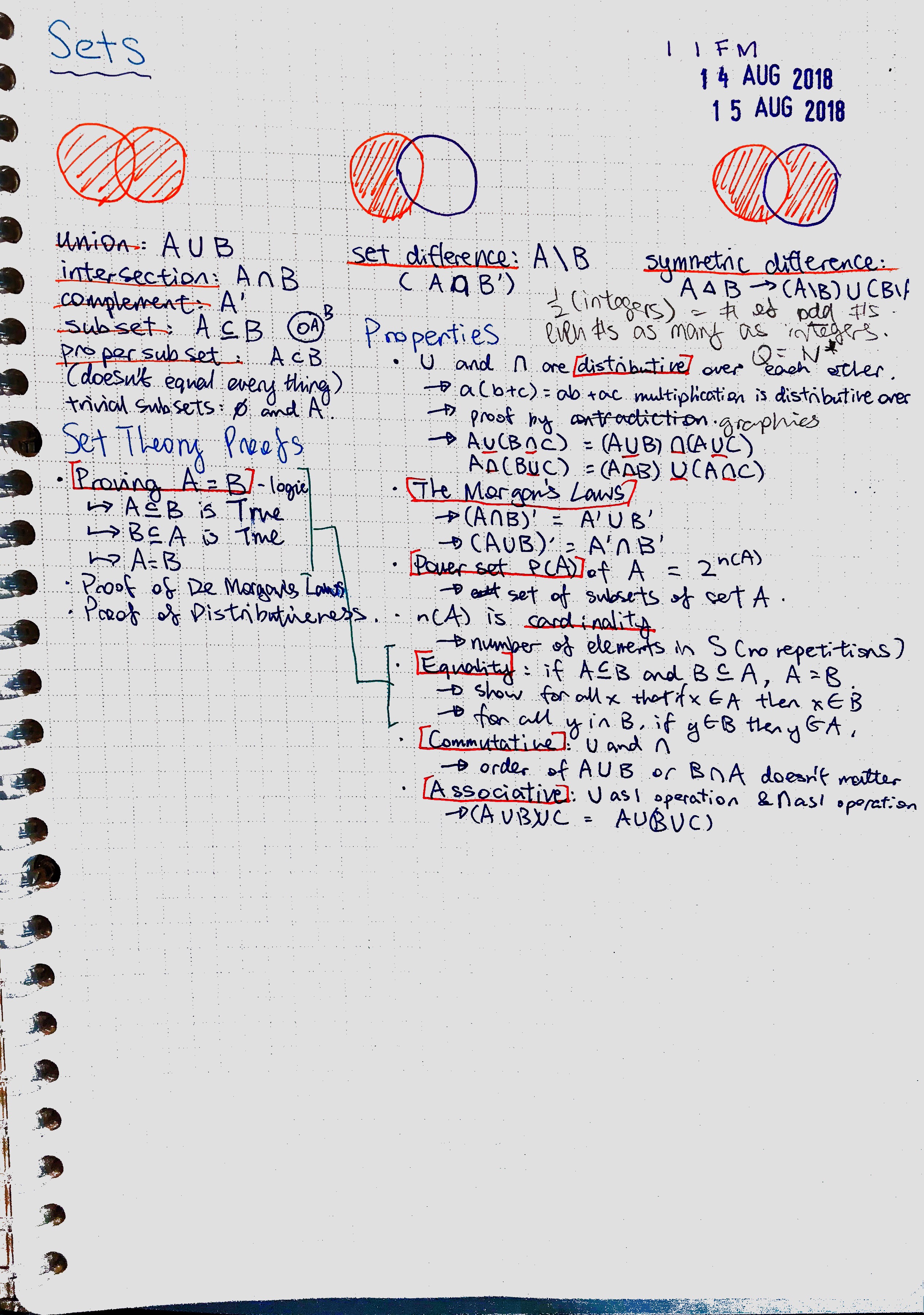



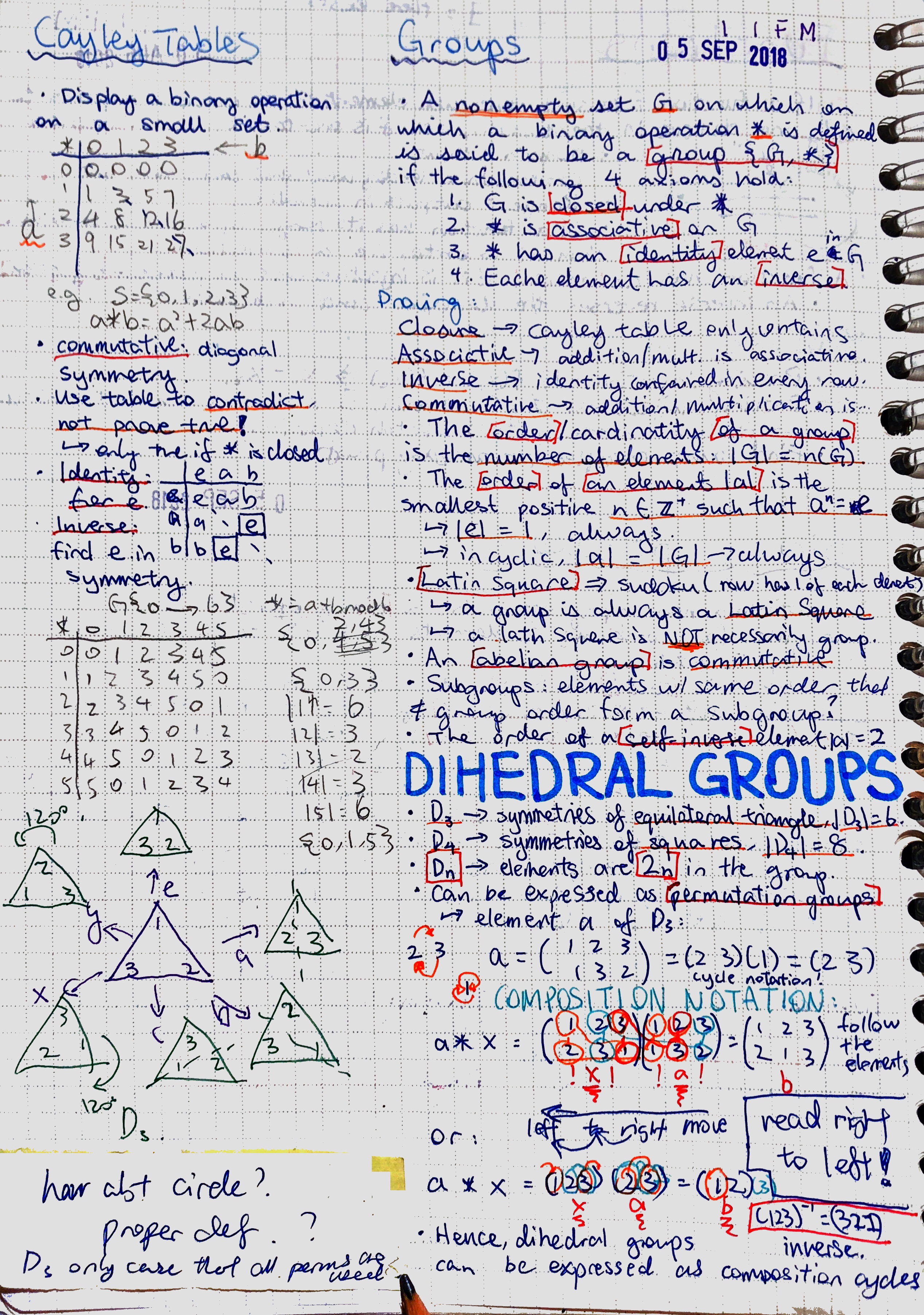
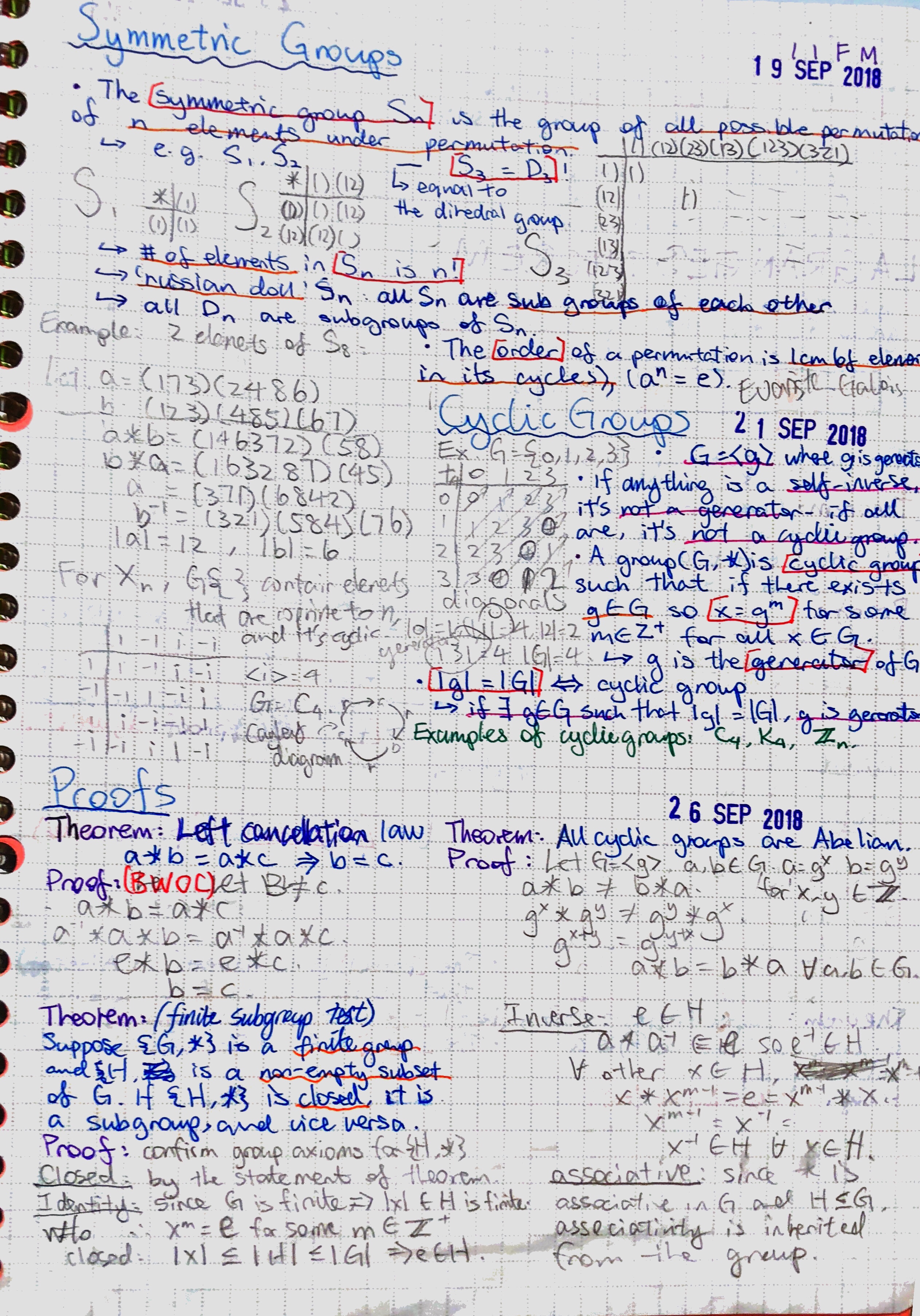
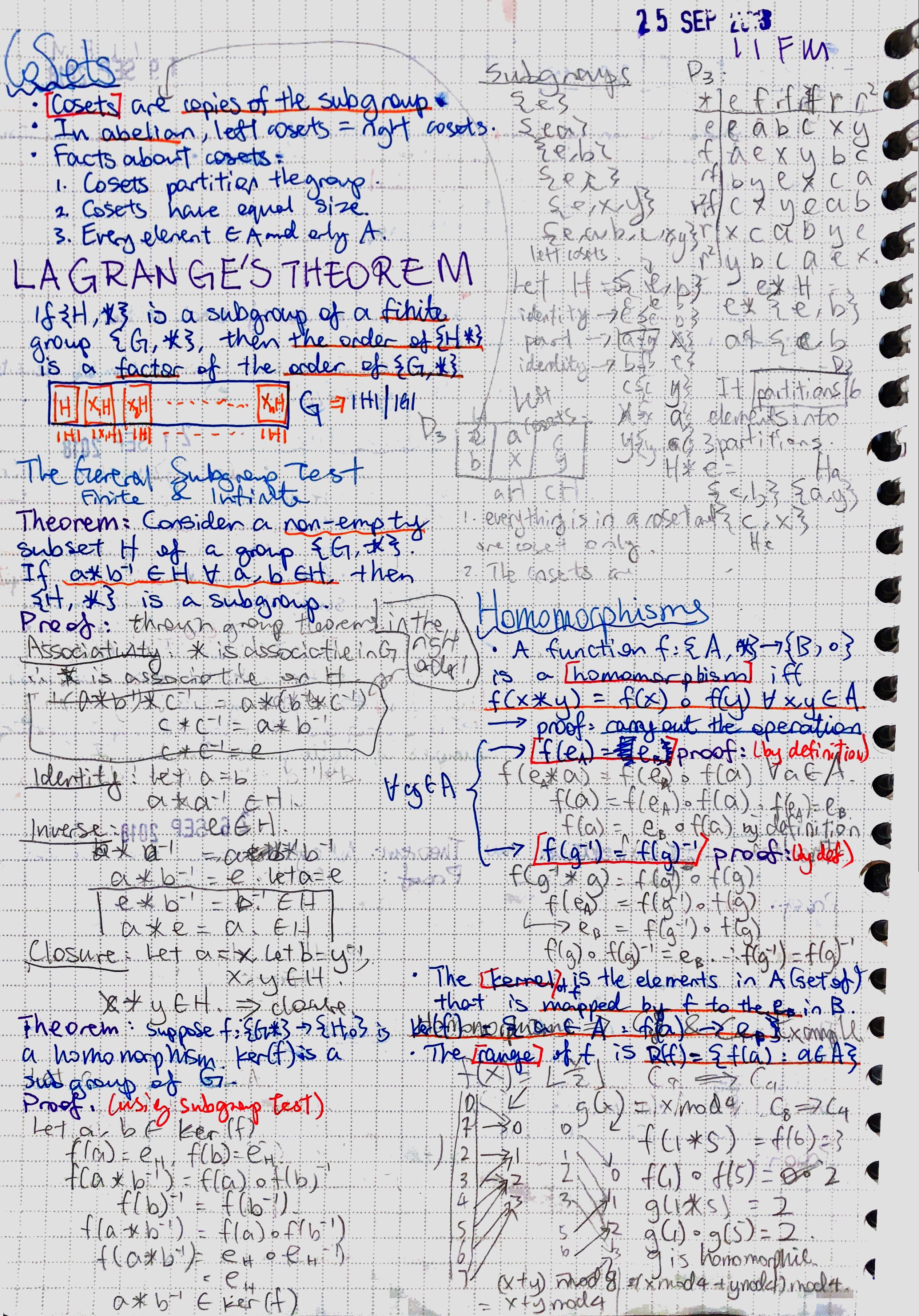
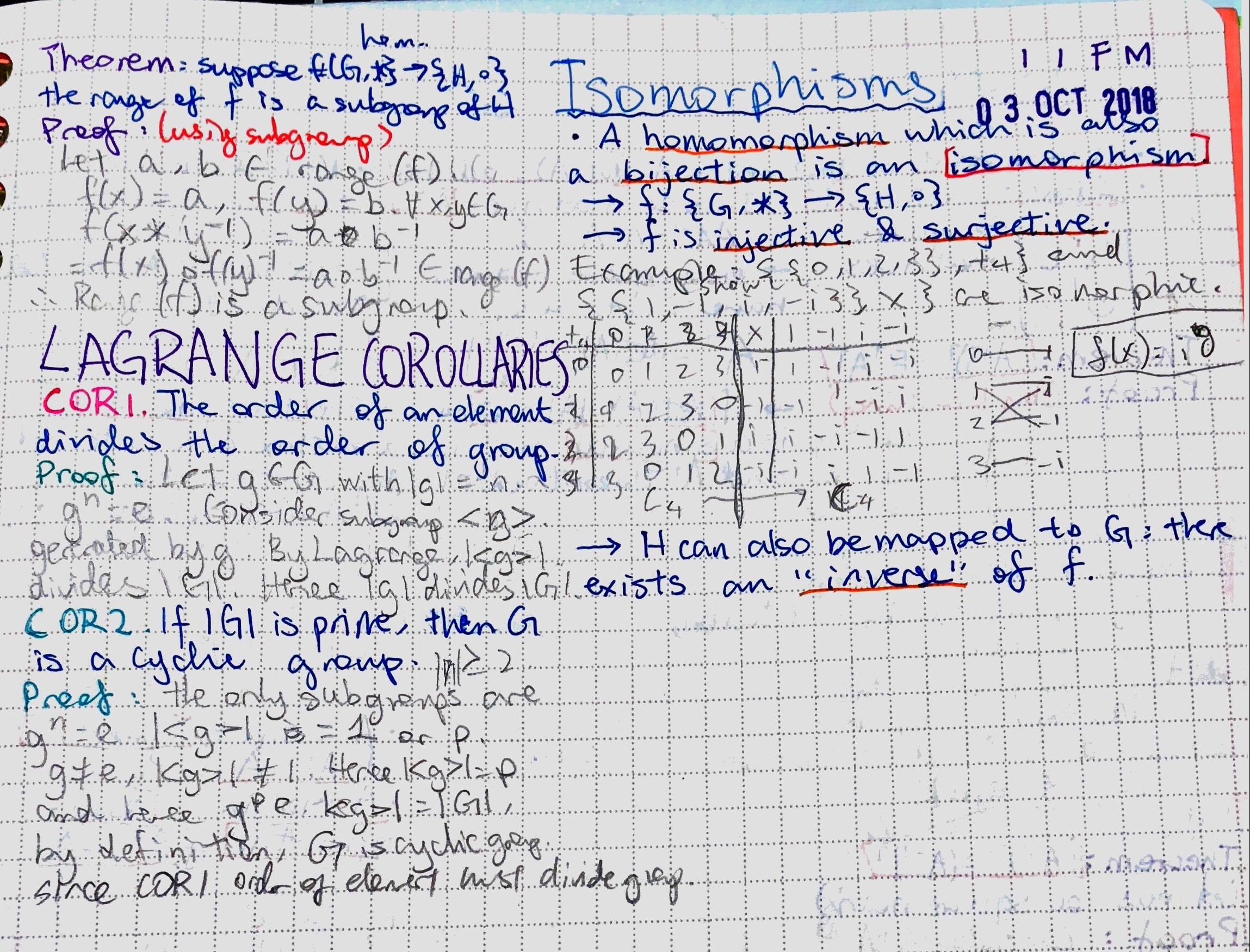
LaTeX for Physics
2018-09-23 00:00:00 +0000
\documentclass{article}
\usepackage[utf8]{inputenc}
\title{Physics Cheat Sheet\\
\small LaTeX for IB}
\usepackage{graphicx}
\usepackage[utf8]{inputenc}
\usepackage{amssymb}
\usepackage{hyperref}
\usepackage[english]{babel}
\usepackage{graphicx}
\usepackage{amsmath}
\newtheorem{theorem}{Theorem}
\newtheorem{principle}{Principle}
\newtheorem{cor}{Corollary}
\graphicspath
\setlength\parindent{24pt}
\usepackage{indentfirst}
% Start the document
\begin{document}
\author{Jingying}
\maketitle{}
% Create a new 1st level heading
\section{Logistics}
\subsection{List of Variables}
\begin{enumerate}
\item $s$ = distance; m
\item $u$ = initial speed; m/s
\item $v$ = final speed; m/s
\item $a$ = acceleration; m/s$^{2}$
\item $t$ = time; s; fundamental unit
\item $J$ = joules; kgm$^{2}$s$^-2$
\end{enumerate}
\subsubsection{List of Constants}
\begin{enumerate}
\item $g$ = gravity; 9.81 m/s$^{2}$
\end{enumerate}
\subsection{Data Manipulation}
\begin{list}{•}{}
\item \textbf{Order of magnitude}: when rounding a number to its nearest power of 10, the cutoff value is \textbf{3.16}.
\item \textbf{Significant Figures}: when \textbf{adding}, round to the largest (least significant figures) between two numbers. when \textbf{multiplying}, round to fewest significant digits.
\item \textbf{Numerical constants} have perfect precision.
\end{list}
\subsection{Equations}
\subsubsection{Error Propagation}
Note: $\Delta x$ represents the uncertainty of x.
\begin{enumerate}
\item \textbf{Addition}: When $y=a+b$, $\Delta y = \Delta a + \Delta b$
\item \textbf{Multiplication}: When $y=\dfrac{ab}{c}$, $\Delta y = y\times (\dfrac{\Delta a}{a}+ \dfrac{\Delta b}{b}+ \dfrac{\Delta c}{c})$.
\item \textbf{Exponentiation}: When $y=a^{n}$, $\Delta y = y\times |n\dfrac{\Delta a}{a}|$.
\end{enumerate}
\section{Motion}
\subsection{Terminology}
\begin{enumerate}
\item \textbf{Acceleration} is the change of \textit{velocity} over time.
\item \textbf{Terminal velocity} is the constant speed that a freely falling object eventually reaches when the force of air resistance equals the force of gravity; the maximum velocity reached by an object.
\item \textbf{Energy} is the potential to cause change and is measured in joules.
\item \textbf{Projectile motion} is the motion of any object in free fall.
\end{enumerate}
\subsection{Principles}
\begin{theorem} (Conservation of energy)
Energy cannot be created nor destroyed.
\end{theorem}
\begin{cor} (Energy in a closed system)
The sum of the initial energy equals the sum of the final energy in a closed system over time.
\begin{center}
$\displaystyle \sum E_{i} = \sum E_{f}$
\end{center}
\end{cor}
\begin{theorem} (lowest order of energy)
All actions tend towards the lowest order of energy - internal energy, which is the heat energy of random movement of molecules.
\end{theorem}
\begin{theorem} (optimal launch angle)
Ignoring air resistance, the optimal launch angle from rest on a plane surface is 45 for projectile motion that desires maximal range.
\end{theorem}
\subsection{Equations}
\subsubsection{Energy}
\begin{enumerate}
\item $E_{k} = \dfrac{1}{2} m v^{2}$ Kinetic energy
\item $E_{g} = m g h$ Gravitational potential energy
\end{enumerate}
\subsubsection{One-Dimensional Linear Motion Equations}
\begin{enumerate}
\item $s = u+at$ From
\item $v^{2}=u^{2}+2as$
\item $s= \frac{(u+v)t}{2}$
\item $s= ut+\dfrac{1}{2}at^{2}$
\end{enumerate}
\subsubsection{Projectile Motion in 1D}
\begin{enumerate}
\item $V_{0x}=V_{0} \cos \theta$ Initial horizontal velocity
\item $V_{0y}=V_{0} \sin \theta$ Initial vertical velocity
\item $x = V_{0x}t$ Range; horizontal displacement
\item $\dfrac{V_{0y}^{2}}{2g}$ Maximum height reached
\item $\dfrac{V_{0y}}{g}$ Time to maximum height
\item $\dfrac{2V_{0y}}{g}$ Total time of flight
\end{enumerate}
\end{document}Causes of WWI
2018-09-12 00:00:00 +0000
-
1906 Algeciras Conference The resulting convention awarded France a controlling interest in Moroccan affairs, but guaranteed equality of trade and economic freedom for every nation and limited any colonial action by any nation without consultation with the other signatories.
- 1911 Second Moroccan Crisis French pushed troops into the country, claiming to be defending the sultan against riots that had erupted in Fez but actually violating the terms of the Algeciras convention. When the French pushed troops into the country, claiming to be defending the sultan against riots that had erupted in Fez but actually violating the terms of the Algeciras convention. In response, Germany sent its own warship, the Panther, which arrived in the port of Agadir on May 21, intensifying the enmity between the two nations and, by extension, their allies. Europe climate had shifted into large blocs of power.
-
Nationalism: an form of patriotism marked by a feeling of superiority over other countries
-
1871-1914 German Nationalism
-
1871 German unification
-
Treaty of Frankfurt → end of Franco-Prussian War.
-
Takes land of Alsace Lorraine.
-
France is humiliated - pay money, lose land, host German celebration in Hall of Mirrors.
-
It is Bismarck’s Shortsightedness to challenge the most powerful - no wish to be friends with France.
-
France was humiliated in this war and had always wanted payback.
-
Despite created the new state of German Empire. In the eyes of some, it is not complete.
-
France is not dangerous, but if it allies with Austria or Russia it might be.
-
Hence, Prussia promises a generous peace, in return Austria does not interfere with ‘German affairs’.
-
When Austria defeated, only Russia is more powerful than Germany.
-
Bismarck believes allies are made for reasons and there are no real friends: realpolitik, looking at own best practical interest.
-
-
1884 MG-08 Germany produces MG-08, machine gun. Possibly what caused the war. Both Britain and Germany were practicing using these in Africa.
-
1890-94 German New Course Wilhelm II, German Emperor dismisses Bismarck and wishes to exert more personal control on the empire. More aggressive foreign policy.
-
1896 Weltpolitik
-
Break from realpolitik of Bismarck’s era, will transform Germany into a global power through:
-
Aggressive foreign policy
-
The acquisition of overseas colonies
-
The development of a large navy (Britain…)
-
-
-
1914 Serbian Nationalism - Catalyst (The BS in the Balkans)
-
Ottoman Empire Weakness
-
The Ottoman Empire dominated the Balkans for centuries.
-
Recently, it’s been weaker - the sick man of Europe. Other powers have a chance to gain more territory.
-
Russia and A-H have ambitions in this area.
-
-
1908-09 Bosnian Crisis
- Austria-Hungary announced the annexation of Bosnia and Herzegovina, territories formally within the sovereignty of the Ottoman Empire. Germany is forced to support AH. The crisis permanently damaged relations between Austria-Hungary on one hand and Serbia, Italy and the Russian Empire on the other. Austria annexed Bosnia in the Balkans. This annoyed** **Serbia, as thousands of Serbians went under A-H control and also Serbia wanted to take over the area. Russia wanted to help Serbia, but had to back down seeing German support. Internally, Russia parliament is angry at not helping ‘our Slavic brothers’.
-
1911 Italian-Turkish War Colonial war, defeat leads to Balkan wars
-
1912-13 Balkan Wars Serbia and other countries in the Balkans conquered most of Turkey’s land in Europe with Russian support. Serbia became a powerful country, and said Austria-Hungary was its next target. AH threatens war, Russia supports Serbia.
-
1914 Black Hands
-
A Serbian nationalist movement that aimed to unite territories with a South Slavic majority under Serbian control using violent means, including lands held by A-H.
-
May be behind the assassination of Archduke Franz Ferdinand.
-
-
-
-
Industrialization: the development of industries in a country on a wide scale
- They industrialized.
-
Militarism: the belief that a country should maintain a strong military capability and be prepared to use it aggressively to defend or promote national interests
The increased ability to produce weaponry due to industrialization empowered the motivation to imperialism abroad and domestically in Europe.
* 1870-14 Second Industrial Revolution
This is a period of massive improvements in technology and science fueled by nationalism.
* Louis Pasteur developed germ theory in 1860-5.
* He has money from French government and therefore develop vaccinations to challenge German authority, showing that France is scientifically more advanced.
* 'War on Science' - German pushes pharmaceutical industry.
* Robert Koch is a German person who began to develop vaccines.
* Both countries see science as a pathway to political deterrence. These vaccines were preparing for warfare.
* Pre-1914 Arms race:
* Russia had the largest army in 1914 (1.3 million troops) but not the strongest (outdated weapons)
* Austria-Hungary's army more than doubled to 810000 by 1910.
* 1906 Naval arms race:
* From 1815 onwards, Britain had the biggest navy in the world. It was always double the size of everyone else's.
* This is because Britain needs to keep the military and also the trade. It was a necessity.
* German King also wants to have a big navy. In Germany,
* 'In 1898, the Naval Act provided for 19 battleships and 8 cruisers.'
* 'In 1900, the second Naval Act provided for 38 battleships and 20 cruisers.'
* In 1906, Britain develops the HMS Dreadnought and destroys its own navy.
* Dreadnought was a class of ships that is faster, better armed and can travel further, runs on steam power.
* It made all the other ships obsolete.
* Kaiser sees the ship and wants it.
* They began competing who can make the most Dreadnoughts.
* By 1914, Germany had 17 Dreadnoughts while Britain had 29.
* Both sides received massive public support.
* It was economically impossible for the Germans to close the gap before the war broke out.
* By the time of war, Britain was still the biggest navy in the world.
- Military plans
New military weapons meant new plans. Rather than having a small conflict, every nation jumped in with their own plans and that’s why WWI became such a large scale conflict.
* 1903 Schlieffen Plan
* Aims to prevent war against eastern border with Russia and western border with France simultaneously
* reaction of German fear of encirclement - created in 1903, which means to attack the French first, just like in 1871. Launch attack from Alsace-Lorraine, main attack will come through Belgium to Northern France: need to move fast. Hit France first, then focus on all Russians. Changes and adaptions are relied on # of factors:
* Superiority of the German Military - higher mobility, greater firepower (after 1908, MG-08 machine gun), better training.
* Plan is based on Russian army of circa 1900s - huge armies, not industrialized, lacked railways → slow mobilizations. Early July, Russia starts to mobilize the armies since they know that they are slow.
* For France and Russia, yet now it's Triple Entente - Britain will also get troops to help France, Britain will get troops to France through navy and land on certain ports. Adapted to ensure Britain does not get troops to France fast enough - changes plan at last minute. Break out from German Hook, German troops will capture certain deepwater ports.
* Schlieffen plan did not work, yet cannot stop. In Britain, mobilization is also growing out of control. The Plan is what started the fighting.
* Russian plans:
* Rapidly move against Germany so it **mobilized first** in order to counter logistical problems
* **1913 **France Plan XVII: launching against Germany on shared border
* Britain plan:
* Send their army to France in the event of war
* Concentrate to destroy Germany's navy to hinder supplies, and hence weaken German economy and morale
-
Alliance systems:
-
Alliance System: The two power blocs of countries in World War I, Triple Alliance and the Triple Entente

Date of Key Alliances:
-
1879 Dual Alliance between Germany and Austria, forming Triple Alliance by 1882 with Italy.
-
1887 Reinsurance Treaty with Germany and Russia, a short alliance by Bismarck immediately after the collapse of Dreikaiserbund (G,R,A to isolate France). Breaks by 1890.
-
1891-92 Franco-Russian Alliance. Germany isolated.
-
1904 Entente Cordiale between France and Britain. Unite against should Germany attack. Defensive.
-
1907 Triple Entente between France, Britain and Russia against Germany.
Triple Alliance: Germany, Italy, Austria-Hungary
- Secret alliance, defensive alliance
Triple Entente: Britain, France and Russia (much later than the triple alliance)
-
Not an alliance: the agreement to not help the enemy. No one knew the full story behind the treaties.
-
France goes to Russia first, and Russia dominates in Eastern Europe, yet they do not know yet the weakness of Russian society.
-
In 1904, all of Europe laughed at Russia: it lost the Russo-Japanese War. Britain, France and America impose peace settlement in which Japan gives back land from war to a divided up China, for the economic benefit of these countries.
All alliances were formed with a motivation that is somewhat related to Germany: Germany fears isolation while others fear German strength.
It is important to note that the premise of alliances and triple entente did not need to be antagonistic. It is a peace preparing for war.
To what extent did the alliance system cause war?
- The July chain reaction is superficial
Although all signatories were at war, the countries did not enter blindly by alliance systems and it was based on the state of their individual agendas, especially for the Triple Entente.
- Fostering insecurity within Germany
Germany was encircled by hostile powers and this fostered insecurity. Germany is also concerned about France and Britain’s growing military strength.
- Appeal of striking first in German military
Germany would provoke a preventative war since it has the advantage to launch a first strike before rivals are fully prepared, and this came to be seen as the most effective way to improve security prospects.
Short Term Causes: Assassination and the July Crisis
-
1914 July Crisis
-
28 June, heir to the Austro-Hungarian throne visited Sarajevo, Archduke Francis Ferdinand.
-
He is a moderate, does not oppose serbia, Serbian and Bosnian solution
-
Serbian nationalists had time to make plans to assassinate him.
-
All assassination attempts failed but chance means that Princip, a Serbian nationalist, killed Ferdinand and wife.
-
Europe was shocked and Austria and Serbia seemed need to showdown.
-
Austria had a perfect excuse to militarily punish Serbia.
-
Austrian Foreign minister Berchtold, Emperor agreed that risking war with Russia is necessary to preserve Austria’s face.
-
5-6 July Blank Check
-
Kaiser and Chancellor promised full German support for Austria for whatever military action.
-
This ‘blank cheque’ was offered and both Kaiser and Chancellor recommended immediate action against Serbia assuming:
-
Russia Tsar would not support assassination of Ferdinand
-
Russia would not act without French support (which iis unlikely)
-
German government was risking but not expecting European war.
-
Austria hungary did not act until 23 July.
-
23 July ultimatum
-
Austria-Hungary presented an ultimatum to Serbia on 23 July.
-
It is very severe and certain that Serbia would reject within 48 hr time limit.
-
Russia promised to support, Serbian government expected war.
-
Austria immediately severed diplomatic relations and declared war on Jul 28.
-
24-25 July Russian support
-
Sazonov, Russia foreign minister, interpreted Austrian ultimatum as deliberate provocation.
-
Fellow slav state was being threatened by Germanic powers.
-
Russian prestige in the Balkans was at stake.
-
Russia’s position in Balcans would collapse if it abandoms Serbia.
-
Russia does not want to repeat its mistake in the 1908-09 Bosnian Crisis.
-
Russia mobilized first.
-
26th July Attempt at Peace Britain tried to arrange a diplomatic conference on the 26th July, many countries agreed to come but Germany refused to attend. The conference never met.
-
28 July Austria Hungary declared war on Serbia
-
29th July Britain proposed mediation.
-
29th July Nicholas II Russian Tsar sends telegram to Wilhelm to request help in restraining Austria-Hungary and to prevent war. Germany made it clear that any Russian mobilisation would provoke German mobilisation.
-
Russia in ‘period preparatory’ on July 25-26, ready to fight already, to deter Austria, before Serbia rejected ultimatum.
-
Germany demanded Russia to stop.
-
Germany declared war on Russia 1st August and began mobilising France also started on this day.
-
Germany asked France for neutrality, and when there is no reply Germany declared war on France on 3rd August.
-
Germany demand passage through Belgium 2nd August, prepared to guarantee independence to it.
-
Belgian government rejected Germany’s request, German troops invaded Belgium.
-
Great powers guaranteed Belgian nutrality in 1839 impacted Britain. Britain must defend Belgium and its ultimatum was rejected, Britain declared war on Germany on 4 August.
-
1 Measurement
2018-09-03 00:00:00 +0000
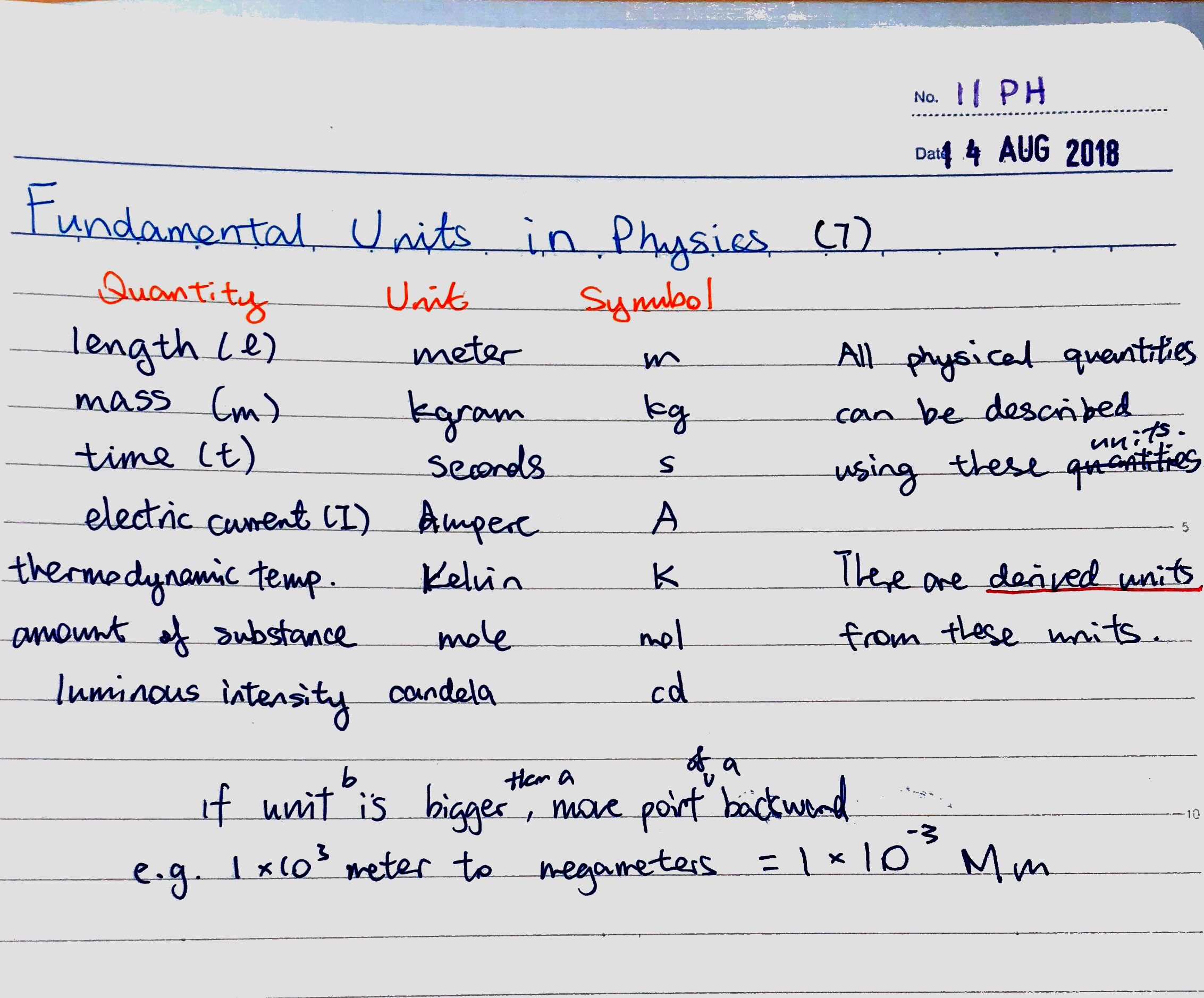
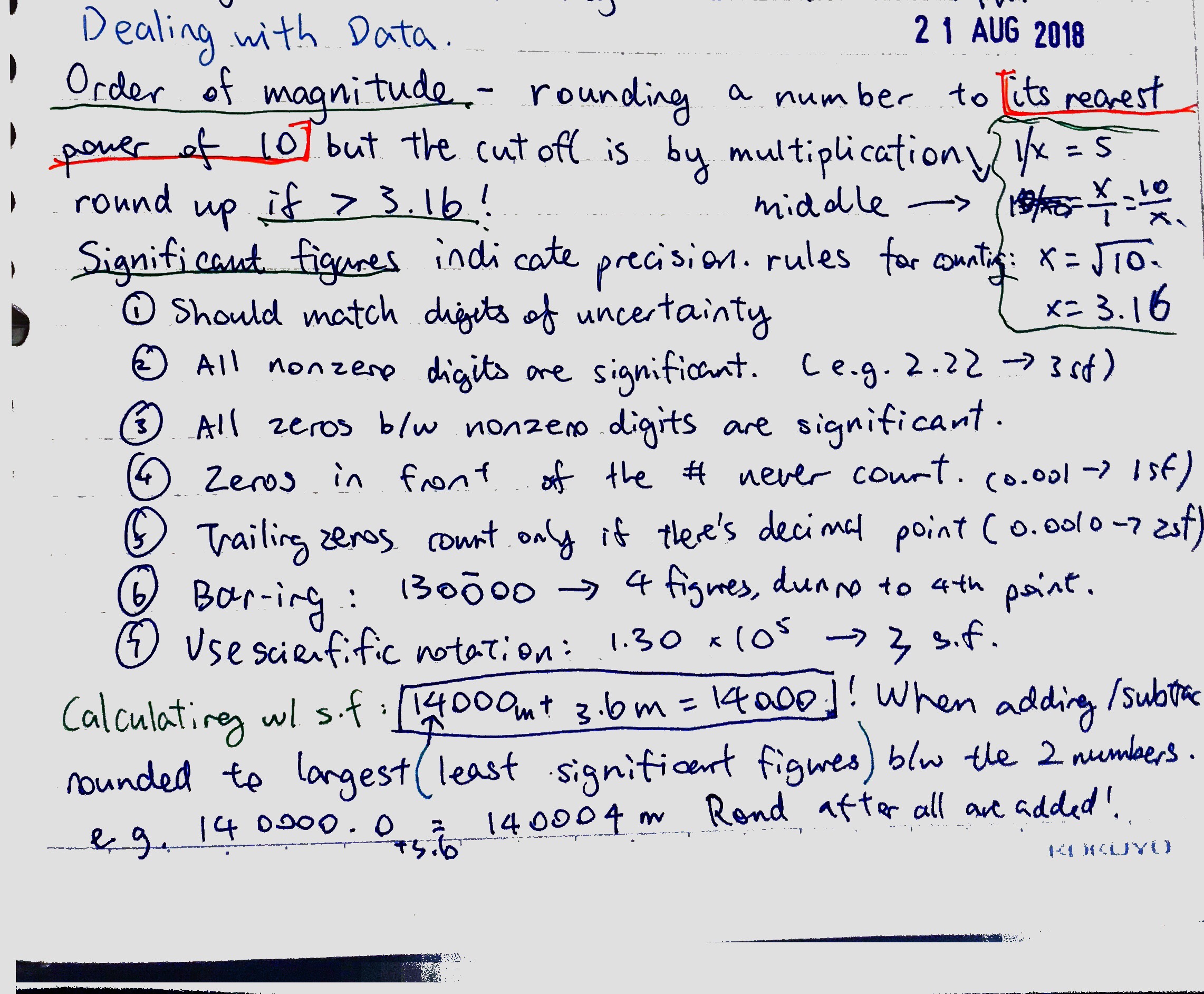
History Notes IB
2018-09-02 00:00:00 +0000
[[TOC]]
1 World War I
Causes of First World War
Long term causes (6) (ANIMAssassinationLeaders?):
-
Economy
-
1715-1900 Industrial Revolution: must of the western world had industrialized in 19th century, so raw materials such as coal, iron and steel on a vast scale so weapons are produced easily.
-
19th century Britain Dominance, German Rise: Britain is the most significant industrial power, and Germany(1871) starts to catch up to Britain.
-
1880 Britain was 23% of world’s output while Germany was 14.8%
-
1910: Germany’s industrial output exceeded Britain’s
-
By 1913 Britain waas 13.6^% and germany was 14.8%
-
-
Post 1860s United States are also rising: 14.6% 1880 to 32% in 1910
-
Economic Competition: economic strength imply military strength
-
Each feared being weaker
-
Iron and steel, economic assets, are important for weaoponry
-
Railways transport troops and good.
-
-
Economic changes redefined the European political landscape. It ends up becoming a motivation and causing the sheer scale of the war since this means a huge world war with large weapons and casualties.
-
Imperialism: The act of extending a country’s political and military power to foreign countries through colonization.
-
Colonial Rivalry; Imperial Proxy Wars Germany need to distract and make friends. Germany encourages both England and France to expand in Africa, proxy war in Africa. Italy wants North Africa, which France wants as well. Russian emperor is Prussian emperor’s cousin, yet Bismarck is wary - assuming the lack of morals in everyone. Germany encourages Russia to explore Asian territories while secretly arming Japan. Bismarck directs the Austro-Hungary to the Balkans, but Bismarck arms the Ottoman empire. Bismarck instructs other Europeans to look elsewhere and turning them against each other
-
1895 Jameson Raid - Britain and implicitly, Germany. A few days after the raid, the Kaiser of Germany sent a telegram (the 1896 “Kruger telegram”) congratulating President Kruger and the Transvaal government on their success “without the help of friendly powers”, alluding to potential support by Germany. When this was disclosed in the British press, it raised a storm of anti-German feeling. Dr Jameson was lionised by the press and London society, inflamed by anti-Boer and anti-German feeling and in a frenzy of jingoism. Relationship is worsened.
-
1899-02 Boer War - Germany is friend of Dutch. Makes other european powers want to oppose Britain.
-
1905-06 First Moroccan Crisis - Kaiser declared support for Moroccan sultan against French wishes to take over to disrupt the Anglo-French Entente.
-
1906 Algeciras Conference The resulting convention awarded France a controlling interest in Moroccan affairs, but guaranteed equality of trade and economic freedom for every nation and limited any colonial action by any nation without consultation with the other signatories.
-
1911 Second Moroccan Crisis French pushed troops into the country, claiming to be defending the sultan against riots that had erupted in Fez but actually violating the terms of the Algeciras convention. When the French pushed troops into the country, claiming to be defending the sultan against riots that had erupted in Fez but actually violating the terms of the Algeciras convention. In response, Germany sent its own warship, the Panther, which arrived in the port of Agadir on May 21, intensifying the enmity between the two nations and, by extension, their allies. Europe climate had shifted into large blocs of power.
-
-
Nationalism: an form of patriotism marked by a feeling of superiority over other countries
-
1871-1914 German Nationalism
-
1871 German unification
-
Treaty of Frankfurt → end of Franco-Prussian War.
-
Takes land of Alsace Lorraine.
-
France is humiliated - pay money, lose land, host German celebration in Hall of Mirrors.
-
It is Bismarck’s Shortsightedness to challenge the most powerful - no wish to be friends with France.
-
France was humiliated in this war and had always wanted payback.
-
Despite created the new state of German Empire. In the eyes of some, it is not complete.
-
France is not dangerous, but if it allies with Austria or Russia it might be.
-
Hence, Prussia promises a generous peace, in return Austria does not interfere with ‘German affairs’.
-
When Austria defeated, only Russia is more powerful than Germany.
-
Bismarck believes allies are made for reasons and there are no real friends: realpolitik, looking at own best practical interest.
-
-
1884 MG-08 Germany produces MG-08, machine gun. Possibly what caused the war. Both Britain and Germany were practicing using these in Africa.
-
1890-94 German New Course Wilhelm II, German Emperor dismisses Bismarck and wishes to exert more personal control on the empire. More aggressive foreign policy.
-
1896 Weltpolitik
-
Break from realpolitik of Bismarck’s era, will transform Germany into a global power through:
-
Aggressive foreign policy
-
The acquisition of overseas colonies
-
The development of a large navy (Britain…)
-
-
-
1914 Serbian Nationalism - Catalyst (The BS in the Balkans)
-
Ottoman Empire Weakness
-
The Ottoman Empire dominated the Balkans for centuries.
-
Recently, it’s been weaker - the sick man of Europe. Other powers have a chance to gain more territory.
-
Russia and A-H have ambitions in this area.
-
-
1908-09 Bosnian Crisis
- Austria-Hungary announced the annexation of Bosnia and Herzegovina, territories formally within the sovereignty of the Ottoman Empire. Germany is forced to support AH. The crisis permanently damaged relations between Austria-Hungary on one hand and Serbia, Italy and the Russian Empire on the other. Austria annexed Bosnia in the Balkans. This annoyed** **Serbia, as thousands of Serbians went under A-H control and also Serbia wanted to take over the area. Russia wanted to help Serbia, but had to back down seeing German support. Internally, Russia parliament is angry at not helping ‘our Slavic brothers’.
-
1911 Italian-Turkish War Colonial war, defeat leads to Balkan wars
-
1912-13 Balkan Wars Serbia and other countries in the Balkans conquered most of Turkey’s land in Europe with Russian support. Serbia became a powerful country, and said Austria-Hungary was its next target. AH threatens war, Russia supports Serbia.
-
1914 Black Hands
-
A Serbian nationalist movement that aimed to unite territories with a South Slavic majority under Serbian control using violent means, including lands held by A-H.
-
May be behind the assassination of Archduke Franz Ferdinand.
-
-
-
-
Industrialization: the development of industries in a country on a wide scale
- They industrialized.
-
Militarism: the belief that a country should maintain a strong military capability and be prepared to use it aggressively to defend or promote national interests
The increased ability to produce weaponry due to industrialization empowered the motivation to imperialism abroad and domestically in Europe.
* 1870-14 Second Industrial Revolution
This is a period of massive improvements in technology and science fueled by nationalism.
* Louis Pasteur developed germ theory in 1860-5.
* He has money from French government and therefore develop vaccinations to challenge German authority, showing that France is scientifically more advanced.
* 'War on Science' - German pushes pharmaceutical industry.
* Robert Koch is a German person who began to develop vaccines.
* Both countries see science as a pathway to political deterrence. These vaccines were preparing for warfare.
* Pre-1914 Arms race:
* Russia had the largest army in 1914 (1.3 million troops) but not the strongest (outdated weapons)
* Austria-Hungary's army more than doubled to 810000 by 1910.
* 1906 Naval arms race:
* From 1815 onwards, Britain had the biggest navy in the world. It was always double the size of everyone else's.
* This is because Britain needs to keep the military and also the trade. It was a necessity.
* German King also wants to have a big navy. In Germany,
* 'In 1898, the Naval Act provided for 19 battleships and 8 cruisers.'
* 'In 1900, the second Naval Act provided for 38 battleships and 20 cruisers.'
* In 1906, Britain develops the HMS Dreadnought and destroys its own navy.
* Dreadnought was a class of ships that is faster, better armed and can travel further, runs on steam power.
* It made all the other ships obsolete.
* Kaiser sees the ship and wants it.
* They began competing who can make the most Dreadnoughts.
* By 1914, Germany had 17 Dreadnoughts while Britain had 29.
* Both sides received massive public support.
* It was economically impossible for the Germans to close the gap before the war broke out.
* By the time of war, Britain was still the biggest navy in the world.
- Military plans
New military weapons meant new plans. Rather than having a small conflict, every nation jumped in with their own plans and that’s why WWI became such a large scale conflict.
* 1903 Schlieffen Plan
* Aims to prevent war against eastern border with Russia and western border with France simultaneously
* reaction of German fear of encirclement - created in 1903, which means to attack the French first, just like in 1871. Launch attack from Alsace-Lorraine, main attack will come through Belgium to Northern France: need to move fast. Hit France first, then focus on all Russians. Changes and adaptions are relied on # of factors:
* Superiority of the German Military - higher mobility, greater firepower (after 1908, MG-08 machine gun), better training.
* Plan is based on Russian army of circa 1900s - huge armies, not industrialized, lacked railways → slow mobilizations. Early July, Russia starts to mobilize the armies since they know that they are slow.
* For France and Russia, yet now it's Triple Entente - Britain will also get troops to help France, Britain will get troops to France through navy and land on certain ports. Adapted to ensure Britain does not get troops to France fast enough - changes plan at last minute. Break out from German Hook, German troops will capture certain deepwater ports.
* Schlieffen plan did not work, yet cannot stop. In Britain, mobilization is also growing out of control. The Plan is what started the fighting.
* Russian plans:
* Rapidly move against Germany so it **mobilized first** in order to counter logistical problems
* 1913 France Plan XVII: launching against Germany on shared border
* Britain plan:
* Send their army to France in the event of war
* Concentrate to destroy Germany's navy to hinder supplies, and hence weaken German economy and morale
-
Alliance systems:
-
Alliance System: The two power blocs of countries in World War I, Triple Alliance and the Triple Entente

Date of Key Alliances:
-
1879 Dual Alliance between Germany and Austria, forming Triple Alliance by 1882 with Italy.
-
1887 Reinsurance Treaty with Germany and Russia, a short alliance by Bismarck immediately after the collapse of Dreikaiserbund (G,R,A to isolate France). Breaks by 1890.
-
1891-92 Franco-Russian Alliance. Germany isolated.
-
1904 Entente Cordiale between France and Britain. Unite against should Germany attack. Defensive.
-
1907 Triple Entente between France, Britain and Russia against Germany.
Triple Alliance: Germany, Italy, Austria-Hungary
- Secret alliance, defensive alliance
Triple Entente: Britain, France and Russia (much later than the triple alliance)
-
Not an alliance: the agreement to not help the enemy. No one knew the full story behind the treaties.
-
France goes to Russia first, and Russia dominates in Eastern Europe, yet they do not know yet the weakness of Russian society.
-
In 1904, all of Europe laughed at Russia: it lost the Russo-Japanese War. Britain, France and America impose peace settlement in which Japan gives back land from war to a divided up China, for the economic benefit of these countries.
All alliances were formed with a motivation that is somewhat related to Germany: Germany fears isolation while others fear German strength.
It is important to note that the premise of alliances and triple entente did not need to be antagonistic. It is a peace preparing for war.
To what extent did the alliance system cause war?
- The July chain reaction is superficial
Although all signatories were at war, the countries did not enter blindly by alliance systems and it was based on the state of their individual agendas, especially for the Triple Entente.
- Fostering insecurity within Germany
Germany was encircled by hostile powers and this fostered insecurity. Germany is also concerned about France and Britain’s growing military strength.
- Appeal of striking first in German military
Germany would provoke a preventative war since it has the advantage to launch a first strike before rivals are fully prepared, and this came to be seen as the most effective way to improve security prospects.
Short Term Causes: Assassination and the July Crisis
-
1914 July Crisis
-
28 June, heir to the Austro-Hungarian throne visited Sarajevo, Archduke Francis Ferdinand.
-
He is a moderate, does not oppose serbia, Serbian and Bosnian solution
-
Serbian nationalists had time to make plans to assassinate him.
-
All assassination attempts failed but chance means that Princip, a Serbian nationalist, killed Ferdinand and wife.
-
Europe was shocked and Austria and Serbia seemed need to showdown.
-
Austria had a perfect excuse to militarily punish Serbia.
-
Austrian Foreign minister Berchtold, Emperor agreed that risking war with Russia is necessary to preserve Austria’s face.
-
5-6 July Blank Check
-
Kaiser and Chancellor promised full German support for Austria for whatever military action.
-
This ‘blank cheque’ was offered and both Kaiser and Chancellor recommended immediate action against Serbia assuming:
-
Russia Tsar would not support assassination of Ferdinand
-
Russia would not act without French support (which iis unlikely)
-
German government was risking but not expecting European war.
-
Austria hungary did not act until 23 July.
-
23 July ultimatum
-
Austria-Hungary presented an ultimatum to Serbia on 23 July.
-
It is very severe and certain that Serbia would reject within 48 hr time limit.
-
Russia promised to support, Serbian government expected war.
-
Austria immediately severed diplomatic relations and declared war on Jul 28.
-
24-25 July Russian support
-
Sazonov, Russia foreign minister, interpreted Austrian ultimatum as deliberate provocation.
-
Fellow slav state was being threatened by Germanic powers.
-
Russian prestige in the Balkans was at stake.
-
Russia’s position in Balcans would collapse if it abandoms Serbia.
-
Russia does not want to repeat its mistake in the 1908-09 Bosnian Crisis.
-
Russia mobilized first.
-
26th July Attempt at Peace Britain tried to arrange a diplomatic conference on the 26th July, many countries agreed to come but Germany refused to attend. The conference never met.
-
28 July Austria Hungary declared war on Serbia
-
29th July Britain proposed mediation.
-
29th July Nicholas II Russian Tsar sends telegram to Wilhelm to request help in restraining Austria-Hungary and to prevent war. Germany made it clear that any Russian mobilisation would provoke German mobilisation.
-
Russia in ‘period preparatory’ on July 25-26, ready to fight already, to deter Austria, before Serbia rejected ultimatum.
-
Germany demanded Russia to stop.
-
Germany declared war on Russia 1st August and began mobilising France also started on this day.
-
Germany asked France for neutrality, and when there is no reply Germany declared war on France on 3rd August.
-
Germany demand passage through Belgium 2nd August, prepared to guarantee independence to it.
-
Belgian government rejected Germany’s request, German troops invaded Belgium.
-
Great powers guaranteed Belgian nutrality in 1839 impacted Britain. Britain must defend Belgium and its ultimatum was rejected, Britain declared war on Germany on 4 August.
-
World War 1
Summary of World War 1
-
Thought to be a short war over by Christmas:
- Became a long war of exhaustion.
-
The first example of modern total war
-
Impacts all civilians through conscription and women, children in medical services
-
Economy of a country prioritizes war
-
Countries mobilized resources on an unprecedented scale
-
Blurs distinction between civilians and combatants.
-
Tactical thinking did not always evolve despite new weapons shaping the nature of conflict
-
Western Front: Primarily in Belgium and France
- The mobile warfare of first month turned into stalemate and trench warfare.
-
Eastern Front: Russia
- Russia mobilized faster than predicted.
The Western Front
-
August-Early September: fighting in France and Belgium
-
Rapid German assault as per the Schlieffen Plan and rapid French retreat.
-
Germany occupied Luxembourg in the first 3 days
-
Germany occupies Brussels (Belgian Capital) in 20 days
-
4 August: Germany violates 1839 Treaty of London of Belgian neutrality protected by Britain; used it to declare war on Germany.
-
Britain wanted to enter the war anyways to defeat Germany.
-
Britain is scared that French defeat will mean that Germany dominates Europe and will capture French navy against Britain (The Channel! So charringly close!)
-
-
At forts of Liege Belgian defence is stubborn and, exhaustion/failing supply lines slow Germany; but ultimately captured by artillery
-
Arrival of British Expeditionary Force (150000, Britain’s best soldiers) changed everything
-
23 August 1914: Battle of Mons
-
Belgium, around Antwerpen
-
The first major action of BEF in WWI, German advance was slowed.
-
Numerically superior Germans, BEF was forced to retreat as Germans were stronger and French army suddenly retreated. There were about 7000 casualties in total.
-
Germany was halted just outside of Paris at the Battle of Marne
-
-
Late August: Failure of the Schlieffen Plan
-
Germany cannot keep up with the Schlieffen Plan anymore they walk slower than 30/40km per day.
-
Germany cannot get supplies due to a failing railway system.
-
The nearest available railheads (where military supplies are unloaded) are 135km away.
-
This meant that Schlieffen Plan will fail as it is important that the blocks are in order so enemies cannot exploit gaps.
-
-
6-12 September 1914: First Battle of the Marne
-
Counter attack by France and BEF forced German army to stop and retreat northwest, first Allied victory against Germany in the West.
-
Led to First BAttle of Aisne and Race to the Sea.
-
Led to four years of Trench Warfare and stalemate on the WF.
-
Turned the tides: up until this point, the entire Allied army is forced into retreat back towards Paris. Saved the Entente powers.
-
-
The majority of soldiers killed during this time are well-trained and professional, and they were replaced by fresh recruits and they are not well-trained.
- The nature of the war changed from one of fast movement and advanced military tactics to defensive warfare and attrition.
-
-
September - December 1914: Attrition and Movement
-
Change of German tactics
-
Schlieffen Plan: strike France quickly, capture Paris, force French to surrender. Belgium refusal to cooperate changed the plan as more German troops were needed to force there way through Belgium.
-
British joining in Belgium meant that plan was adapted further.
-
Germany Army Supreme Command (OHL) decided to divert troops from pushing towards Paris to capturing the Belgian deep-water ports to prevent British reinforcements from arriving there.
-
October 1914: All Belgian ports were under German Control.
-
British is forced to resupply forces through French ports such as Dunkirk.
-
Resulted in less men and artillery in German armies who are attacking Paris.
-
-
Change of nature of warfare
-
Senior officers were surprised : old-school tactics meets modern technology.
-
Technology favors the defending side over attacking side
-
-
Advantages of the defense over the offense:
-
Trench warfare: the defending armies dug trenches into the ground and waited for the enemy to attack. Attackers has to cross open space and defenders may shoot them from behind cover
-
Machine guns: Machine guns are too heavy to move, and they are only fired in stationary positions and hence ideal for use in defense but not at all in attack.
-
In 1914 Britain produced 300 while Germany 500, by 1918 Britain produced 120900 while Germany produced 13000.
-
produced in greater quantities and deployed to greater tactical advantage.
-
-
Barbed wire: Attackers cannot charge into enemy trenches as they were slowed down by having to go through them while being shot at. Barbed wire in front of the trenches gave defenders more time and accuracy to shoot attackers.
-
Untrained recruits: Defensive warfare require less training and this led to both sides to adopt defensive strategies to dig trenches and wait for the enemy to attack them.
-
Failed cavalry (horseback charging): old-school strength of army is suicidal by modern standards and cannot be used against entrenched enemy.
-
-
Offence tactics used:
-
Preliminary artillery bombardment: artillery shells bombard trenches and halt once the advance begins; kills tropps and destroys machine guns and cuts barbed wire, weakens trenches; weaknesses include inaccuracy and giving warning to enemy, as well as useless against trench reinforcements
-
Creeping barrage: Artillery used simultaneously with advance and set to explode just before the advancing troops; provides continuous cover and destroys enemy; weaknesses include bad synchronization and inaccuracies as well as limited communications, leading to casualties from friendly fire
-
Mines: lay mines under enemy trenches through underground tunnels; creates breech in enemy front line. Weaknesses include that digging tunnels are dangerous and miners could be killed, as well as inaccurate/delayed detonation
-
Poison gas: Release of poison gas from canisters or fired towards enemy trenches, causes panic and kills enemy troops. Weaknesses include that when wind changes direction it is blown back to friendly troops and gas masks were invented to defend. Also violates international code of war.
-
Tanks: Invented by the british to support infantry advance; provides firepower and cover in advancing in no-man’s-land. Only from 1916 onwards and are often broken down.
- First used at Battle of the Somme and it was badly used.
-
Artillery tactics: refined by Germans and aircraft.
-
Initially, airplanes were used as observers or spies, they are unarmed.
-
However, they changed and pilots started carrying guns.
-
By 1915, fighter aircrafts have guns built into their wings.
-
German planes are better than Allied plans.
-
Germans have Zeppelin airships which fly further and higher than airplanes.
-
Pilots became propaganda celebrities and the air war was portrayed as clean, noble and heroic.
-
-
-
17 September - 19 October 1914 Race to the Sea
-
German army felt difficulty in overcoming defensive trenches.
-
Germany began outflanking(gaining advantage by going around an enemy’s position) F&B defensive lines by going around them to the North.
-
B&F went further north to outflank the Germans.
-
Neither side could advance very much and more trenches were dug, which will dominate the war on the Western Front for 4 years.
-
The armies were going further north to French and Belgian coast and the Channel.
-
Eventually they faced off each other in October-November 1914 had Germans launch a massive assult against Belgian and French troops.
-
28 October 1914 Belgians flood the field around River Ijzer to stop German advance, prevented Germans from capturing a port.
-
-
The German trenches are better with concrete walls and communication trenches and reinforced concrete bunkers.
-
-
Stalemate: Situation after November 1914. Domestically, profits from militarism, soldiers are miserable and war propaganda saturates nations.
- Britain enlarges commitment to other theatres of war like in the Ottoman Empire.
-
1915 Second Battle of Ypres: 22 April - 25 May 1915
-
Germany attempted to break the stalemate by advancing against the Allied troops.
-
Used the poison gas for the first time. Has psychological impact.
-
60000 Casualties in Allied, 35000 Germans - heavy casualties
-
Minimal territorial gain by Germany.
-
Gas created panic and troops escaped from trenches, allying the German’s to attack.
-
-
Characteristic of War in 1916
-
Huge battles of attrition with enormous casualties and little territorial gain
-
Unbroken stalemate
-
-
1916 Battle of Verdun: 21 February – 18 December
-
Late 1914, German Army Commander Erich von Falkenhayn decided to launch massive assault against French.
-
Plan to attack as ite of high emotional value and force them to defend it at all costs: fortress at Verdun-sur-Meuse in north eastern France.
-
21 Feb 1916: German army launched operation Gericht and attacks heavily fortified locations defended by French.
-
French commander told men to not withdraw at any cost.
-
The next eleven months, the German forces attempted to destroy Verdun.
-
Longest battle of the entire war.
-
First use of new assault tactics.
-
The Germans were convinced that enough casualties will force France to surrender.
-
Germans did not succeed and French did not surrender.
-
-
French casualties amount to 542000 but they still held Verdun.
-
German casualties amount to 434000.
-
After 10 months, Germany only held 8km more territory.
-
-
1 July - 18 November 1916: Battle of the Somme
-
“Futility and waste of war, lions led by donkeys”
-
Exemplifies attrition strategy.
-
‘Suicidal battle’
-
B&F want to relieve some pressure on Verdun and break stalemate.
-
B&F wanted to attack Germany against German trenches near River Somme.
-
Leading up to July 1916, British and French decided to increase ammo production and built a new secret weapon: the tank, preparing for massive assault to launch against German trenches. However, they were ineffective and did not help Britain.
-
Classic tactics of trench warfare was used.
-
Before the attack, there was a week-long artillery bombardment where 1 million + shells to be dropped on German trenches. However, this was ineffective as German trenches are assumed by B&F to be weak like their own but it was actually strong. Instaed, the artillery actually made it more difficult to attack and warned the Germans that they are coming by stopping the bombardment when the signal for soldiers to charge is happening.
-
B&F attacked on 1st of July and advanced slowly through no-man’s-land (the space between trenches) and tried to throw grenades in.
-
Germans stayed behind trenches and killed so many: British casualties on the first day is 60000+ killed or seriously wounded.
-
British Pal’s Battalions: effort to boost recuitment by ensuring that people from the same town served in the same regiment together resulted in entire areas of Britain waking up to men killed.
-
Lasted until November.
-
In total, 420000 British and 200000 French casualties, 500000 German.
-
Allies only advanced 13km in some places.
-
Germans gained very little ground.
-
Also became battle of attrition despite not being the intention.
-
Relieved the pressure of defenders of Verdun as Germans are attacked from behind and Germans need to send troops to both sides.
-
-
1917: Unbroken stalemate
-
Allied victory was imminent.
-
Victories are achieved by the tank.
-
USA enters the war to help the Allieds.
-
-
1917 Nivelle Offensive: 16 April - 9 May
- French offensive
-
1917 Battle of Passchendaele: 31 July - 10 November 1917
-
Britain offensive at Ypres in Belgium.
-
Allies gained 8km for 325000 casualties.
-
German had 260000 casualties.
-
-
1917 The US of A joins the war: April
-
In April, USA entered to help allies because:
-
Germany’s submarine warfare targeted US vessels.
-
Germany is discovered to be encouraging Mexico to invade the USA.
-
-
Improved Allies’ exhaustion by introducing troops and supplies.
-
By March 1918, 250000 men arrived in Europe every month.
-
German morale was down as its own reserves are running out by 1918.
-
-
1918 The Ludendorff Offensive: 21 March - 3 June
-
A massive German offensive designed to bring about decisive victory.
-
Named after the commander Ludendorff
-
Commander is conscious that this is Germany’s last chance to win the war as manpower and materiel are running out especially against the US.
-
The Spanish influenza also made half a million of German troops too ill to fight and morale is severely weakened.
-
Germany used new infantry and artillery tactics, infiltration tactics:
-
Hurricane barrage: A short intensive bombardment was used to storm Allied lines with explosive and gas shells 30 minutes before the infantry assult began.
-
Stormtroopers: rapid movement of small detachment infantry, has lightweight submachine guns and grenades made to penetrate lines through previously identified weak points, covered by creeping barrage. They are more flexible and they have the element of surprise and speed.
-
Second wave of infantry sent to consolidate the capture.
-
-
Initial German success of advancing 65km in the first week.
-
The advance lost momentum due to a lack of reserve forces.
-
15 July - 3 August Second Battle of the Marne: Allied launched counterattacks against Germany and forced Germany to draw back.
-
8 August 1918 Amiens: Allied used tank and aircrafts to push Germany back.
-
German retreat was irreversible as they are repeatedly forced to go back until fighting was stopped with an armistice.
-
-
11 November 1918 Armistice
The Eastern Front
-
Germany and Austria Hungary and Bulgaria (entered the war in October 1915) fought Russia and Serbia.
-
Due to poor resources and bad leadership, Russia loses and this led to the first Communist nation where the Tsar is overthrown and territory was yielded.
-
Russian forces moved faster than anticipated.
-
In 1914, Russia fought well with A-H but failed against German troops.
-
1914 Battle of Tannenberg 22-29 August 1914
-
Russia forces were able to push Germans back as they invaded East Prussia until this event.
-
German army encircled the Russian army of Alexander Samsanov.
-
Russian army defeated by German army.
-
German borders were not threatened by Russian troops anymore.
-
This is the first defeat for the Russians
-
5-15 September 1914 Masurion Lakes were more defeats for Russian by Germany,
-
-
1915 Italy joins on the side of the Allies
-
Treaty of London: Italy joins the war because of this secret treaty.
- Promised territory from A-H at war’s ending.
-
Italian soldiers were poorly trained and equipped.
-
They engaged in slow trench warfare in the mountains between A-H, with small territorial gains of only mere kilometers.
-
B&F hoped that Italy can strike A-H from the south, but they failed and did not impact the war that much.
-
-
1916 is characterized by a clear German advantage over the Russians despite impressive gains by Russians.
-
2 June 1916 Brusilov Offensive
- Launched against Austro-Hungarian troops, inspired overthrowing the government in Russia
-
February 1917 February Revolution in Russia
- Tsar overthrown by provisional government
-
The October Revolution in Russia
-
3 March 1918: Treaty of Brest-Litovsk
- Russia yielded territory to Germany.
The war on the air and in the sea
-
1915: first use of submarines in warfare
- Sinks American passenger call
The home fronts
-
Many countries underestimated the number of ammo they need.
-
By 1916, many countries were falling behind.
-
Russia
-
Russia suffered all throughout due to bad resources allocation
-
Russia is agriculturally behind as it hasn’t gone through industrial revolution despite having a huge army.
-
April 1915: Russia ammunition shortage.
-
Russia price of salt inflated by 483%.
-
-
May 1915 Shell Scandal in Britain
- People thought that because Britain produced less shells, they can’t win on the Western front.
-
1915 Introduction of women in the workforce Britain
-
France increased production from 4000 shells per day in 1914 to 151000 shells per day in 1916.
-
April 1918 Britain rationing system introduced and the blockade since it imports most from other countries.
WWI in Africa, Asia and the Middle East
The war in these colonial proxy war grounds are characterized by European commanders leading local soldiers. In Africa, German territories used local troops and guerilla warfare to fend of stronger troops from British, French and Belgian colonies. In Middle East, war is characterized by Ottoman Empire’s presence and Britain’s use of Arab nationalism to stir up trouble against the Ottoman Empire from within. In Asia, Japan enters the battle in hopes to gain more influence in China and in the Islands by siezing German colonial possessions, such as the Chinese port of Tsingtao and some islands in the Pacific.
-
In colonies, European officers and local soldiers filled the ranks in proxy warzones.
-
Soldiers were poorly treated and died of malnutrition and bad living conditions, resulting in high casualty rates.
-
In Africa, German, French, British and Belgian forces was fighting.
-
In British colonies and influenced nations, 200000 was dead and 600000 was founded.
-
In Asia, there was fighting after Japan entered the war in 1914.
-
Men were forced to leave homes to go to Europe to fight.
-
More mobile warfare, similar to the Eastern Front.
-
Colonial troops were awfully used as pawns which inspired anticolonialism.
-
Africa: guerrilla warfare
-
After the war was declared in August, German officer Lettow-Vorbeck realized that he cannot defeat British, French and Belgian forces.
-
He launched a guerrilla warfare campaign against Allied armies using his Askari troops (black troops fighting for Germany). Similar to the British in the Ottoman Empire.
-
1915 British Imperial forces takes German South-West Africa.
-
25 November 1918 German East Africa surrenders.
-
-
Middle East: Ottoman Empire
-
August 1914 Ottoman Empire signs secret alliance with German.
-
Still, it was reluctant to join the war on either side.
-
2nd August 1914 Ottoman Empire announce neutrality.
-
-
October 1914 Ottoman Empire enters into the war
-
Led to fighting in the middle east.
-
Disadvantaged Russians as it can now be attacked from the South by the Ottomans while Germany and Austria attack them from the west.
-
Russian troops were involved in the north region Caucasus.
-
British and Arab tribes were involved in Mesopotamia and the Levant.
-
-
1915-16: **Gallipoli Campaig**n** 19 February 1915 - 9 January 1916 **
-
Allies launched an assault against Ottoman forces on the Gallipoli peninsula.
-
Allies hoped to disrupt the stalemate by opening another battle ground and weaken Germany and A-H from the south.
-
Allies wished to kick the Ottoman empire out of the war.
-
Allies wished to have small successes that boosts its morale.
-
Allies want to open supply routes to Russia through Dardanelles.
-
British army mainly used troops from Australia and NZ known as ANZACs.
-
April 1915: Amphibious assault(landing infantry force ashore from the sea to attack) was used after a preliminary bombardment of Ottoman forts.
-
January 1916: Allies conceded defeat. They did not expect the Ottomans to be so prepared.
-
45000 allied deaths at Gallipoli, 60000 Ottoman deaths.
-
Allied forces evacuated from Gallipoli and it was less likely that the Allies could supply a failing Russia.
-
-
1914-18: The Mesopotamian Campaign: 6 November 1914 – 14 November 1918
-
Between troops from British and Ottoman Empires.
-
A very mobile conflict.
-
November 1914: British troops made many advances and occupied Basra to ensure access to oil supplies.
-
1915: British capture the town of Kut.
-
British advances on Baghdad was repelled by Ottoman troops.
-
December 1915-April 1916: Ottoman siege of Kut.
-
April 1916: 13000 British troops surrender to the Ottomans and became prisoners of war.
-
March 1917: British offensive on Baghdad succeeded.
-
-
1916-18: The Arab Revolt June 1916 – October 1918
-
Around Palestine and Arabia, British also fought Ottoman forces.
-
Conflict was triggered by Ottoman attack on Suez Canal which was vital for Britain to get supplies.
-
British forces pushed Ottomans back into Palestine.
-
Britain encouraged Arab tribes to revolt against the Ottoman government with promises of support for Arab independence.
-
June 1916: Arab efforts and British troops capture Medina.
-
Arab troops used guerrilla tactics to attack Ottoman railways and supply lines.
-
Arab troops drove Ottoman troops out of Arabia and Palestine into today’s Syria.
-
1918: Damascus captured by Arab troops.
-
October 1918: Ottoman Empire surrenders to the Allies.
-
Ottoman forces lost 48000 men.
-
The Arab leaders were looking forward to creating their own nation states, however these promises are to be betrayed.
-
-
-
Asia: German colonial possessions
-
29–30 August 1914: New Zealand forces occupied and took German Samoa.
-
New Guinea was captured by Australia.
-
Micronesia, the Marianas, and the Marshall Island were captured by Allied forces.
-
7 August 1914 British asks Japan for assistance in destroying German Navy in Chinese waters.
-
Japan joins the war on the condition that it can take Germany’s Pacific territories.
-
Japan mainly seized German possessions.
-
Japan wanted to use the opportunity to expand Japanese influence on China.
-
-
23 August 1914: Japan declares war on Germany after unanswered ultimatum.
-
7 November 1914: Siege of Tsingtao
-
Japan seized the German port at Qingdao.
-
Qingdao has been a German port since 1897.
-
This is why Qingdao has German fermentation roots but their peanuts are way better. Peanuts go very nicely with Qingdao beer (even though Qingdao beer is not nice compared to actual German lager and usually is flat and watery)
-
-
Aliquam

2016-08-25 00:00:00 +0000
Donec eget ex magna. Interdum et malesuada fames ac ante ipsum primis in faucibus. Pellentesque venenatis dolor imperdiet dolor mattis sagittis. Praesent rutrum sem diam, vitae egestas enim auctor sit amet. Pellentesque leo mauris, consectetur id ipsum sit amet, fergiat. Pellentesque in mi eu massa lacinia malesuada et a elit. Donec urna ex, lacinia in purus ac, pretium pulvinar mauris. Curabitur sapien risus, commodo eget turpis at, elementum convallis elit. Pellentesque enim turpis, hendrerit.
Lorem ipsum dolor sit amet, consectetur adipiscing elit. Duis dapibus rutrum facilisis. Class aptent taciti sociosqu ad litora torquent per conubia nostra, per inceptos himenaeos. Etiam tristique libero eu nibh porttitor fermentum. Nullam venenatis erat id vehicula viverra. Nunc ultrices eros ut ultricies condimentum. Mauris risus lacus, blandit sit amet venenatis non, bibendum vitae dolor. Nunc lorem mauris, fringilla in aliquam at, euismod in lectus. Pellentesque habitant morbi tristique senectus et netus et malesuada fames ac turpis egestas. In non lorem sit amet elit placerat maximus. Pellentesque aliquam maximus risus, vel sed vehicula.
Interdum et malesuada fames ac ante ipsum primis in faucibus. Pellentesque venenatis dolor imperdiet dolor mattis sagittis. Praesent rutrum sem diam, vitae egestas enim auctor sit amet. Pellentesque leo mauris, consectetur id ipsum sit amet, fersapien risus, commodo eget turpis at, elementum convallis elit. Pellentesque enim turpis, hendrerit tristique lorem ipsum dolor.
Tempus

2016-08-24 00:00:00 +0000
Donec eget ex magna. Interdum et malesuada fames ac ante ipsum primis in faucibus. Pellentesque venenatis dolor imperdiet dolor mattis sagittis. Praesent rutrum sem diam, vitae egestas enim auctor sit amet. Pellentesque leo mauris, consectetur id ipsum sit amet, fergiat. Pellentesque in mi eu massa lacinia malesuada et a elit. Donec urna ex, lacinia in purus ac, pretium pulvinar mauris. Curabitur sapien risus, commodo eget turpis at, elementum convallis elit. Pellentesque enim turpis, hendrerit.
Lorem ipsum dolor sit amet, consectetur adipiscing elit. Duis dapibus rutrum facilisis. Class aptent taciti sociosqu ad litora torquent per conubia nostra, per inceptos himenaeos. Etiam tristique libero eu nibh porttitor fermentum. Nullam venenatis erat id vehicula viverra. Nunc ultrices eros ut ultricies condimentum. Mauris risus lacus, blandit sit amet venenatis non, bibendum vitae dolor. Nunc lorem mauris, fringilla in aliquam at, euismod in lectus. Pellentesque habitant morbi tristique senectus et netus et malesuada fames ac turpis egestas. In non lorem sit amet elit placerat maximus. Pellentesque aliquam maximus risus, vel sed vehicula.
Interdum et malesuada fames ac ante ipsum primis in faucibus. Pellentesque venenatis dolor imperdiet dolor mattis sagittis. Praesent rutrum sem diam, vitae egestas enim auctor sit amet. Pellentesque leo mauris, consectetur id ipsum sit amet, fersapien risus, commodo eget turpis at, elementum convallis elit. Pellentesque enim turpis, hendrerit tristique lorem ipsum dolor.
Magna

2016-08-23 00:00:00 +0000

Donec eget ex magna. Interdum et malesuada fames ac ante ipsum primis in faucibus. Pellentesque venenatis dolor imperdiet dolor mattis sagittis. Praesent rutrum sem diam, vitae egestas enim auctor sit amet. Pellentesque leo mauris, consectetur id ipsum sit amet, fergiat. Pellentesque in mi eu massa lacinia malesuada et a elit. Donec urna ex, lacinia in purus ac, pretium pulvinar mauris. Curabitur sapien risus, commodo eget turpis at, elementum convallis elit. Pellentesque enim turpis, hendrerit.
Lorem ipsum dolor sit amet, consectetur adipiscing elit. Duis dapibus rutrum facilisis. Class aptent taciti sociosqu ad litora torquent per conubia nostra, per inceptos himenaeos. Etiam tristique libero eu nibh porttitor fermentum. Nullam venenatis erat id vehicula viverra. Nunc ultrices eros ut ultricies condimentum. Mauris risus lacus, blandit sit amet venenatis non, bibendum vitae dolor. Nunc lorem mauris, fringilla in aliquam at, euismod in lectus. Pellentesque habitant morbi tristique senectus et netus et malesuada fames ac turpis egestas. In non lorem sit amet elit placerat maximus. Pellentesque aliquam maximus risus, vel sed vehicula.
Interdum et malesuada fames ac ante ipsum primis in faucibus. Pellentesque venenatis dolor imperdiet dolor mattis sagittis. Praesent rutrum sem diam, vitae egestas enim auctor sit amet. Pellentesque leo mauris, consectetur id ipsum sit amet, fersapien risus, commodo eget turpis at, elementum convallis elit. Pellentesque enim turpis, hendrerit tristique lorem ipsum dolor.
Ipsum

2016-08-22 00:00:00 +0000
Donec eget ex magna. Interdum et malesuada fames ac ante ipsum primis in faucibus. Pellentesque venenatis dolor imperdiet dolor mattis sagittis. Praesent rutrum sem diam, vitae egestas enim auctor sit amet. Pellentesque leo mauris, consectetur id ipsum sit amet, fergiat. Pellentesque in mi eu massa lacinia malesuada et a elit. Donec urna ex, lacinia in purus ac, pretium pulvinar mauris. Curabitur sapien risus, commodo eget turpis at, elementum convallis elit. Pellentesque enim turpis, hendrerit.
Lorem ipsum dolor sit amet, consectetur adipiscing elit. Duis dapibus rutrum facilisis. Class aptent taciti sociosqu ad litora torquent per conubia nostra, per inceptos himenaeos. Etiam tristique libero eu nibh porttitor fermentum. Nullam venenatis erat id vehicula viverra. Nunc ultrices eros ut ultricies condimentum. Mauris risus lacus, blandit sit amet venenatis non, bibendum vitae dolor. Nunc lorem mauris, fringilla in aliquam at, euismod in lectus. Pellentesque habitant morbi tristique senectus et netus et malesuada fames ac turpis egestas. In non lorem sit amet elit placerat maximus. Pellentesque aliquam maximus risus, vel sed vehicula.
Interdum et malesuada fames ac ante ipsum primis in faucibus. Pellentesque venenatis dolor imperdiet dolor mattis sagittis. Praesent rutrum sem diam, vitae egestas enim auctor sit amet. Pellentesque leo mauris, consectetur id ipsum sit amet, fersapien risus, commodo eget turpis at, elementum convallis elit. Pellentesque enim turpis, hendrerit tristique lorem ipsum dolor.
Consequat

2016-08-21 00:00:00 +0000
Donec eget ex magna. Interdum et malesuada fames ac ante ipsum primis in faucibus. Pellentesque venenatis dolor imperdiet dolor mattis sagittis. Praesent rutrum sem diam, vitae egestas enim auctor sit amet. Pellentesque leo mauris, consectetur id ipsum sit amet, fergiat. Pellentesque in mi eu massa lacinia malesuada et a elit. Donec urna ex, lacinia in purus ac, pretium pulvinar mauris. Curabitur sapien risus, commodo eget turpis at, elementum convallis elit. Pellentesque enim turpis, hendrerit.
Lorem ipsum dolor sit amet, consectetur adipiscing elit. Duis dapibus rutrum facilisis. Class aptent taciti sociosqu ad litora torquent per conubia nostra, per inceptos himenaeos. Etiam tristique libero eu nibh porttitor fermentum. Nullam venenatis erat id vehicula viverra. Nunc ultrices eros ut ultricies condimentum. Mauris risus lacus, blandit sit amet venenatis non, bibendum vitae dolor. Nunc lorem mauris, fringilla in aliquam at, euismod in lectus. Pellentesque habitant morbi tristique senectus et netus et malesuada fames ac turpis egestas. In non lorem sit amet elit placerat maximus. Pellentesque aliquam maximus risus, vel sed vehicula.
Interdum et malesuada fames ac ante ipsum primis in faucibus. Pellentesque venenatis dolor imperdiet dolor mattis sagittis. Praesent rutrum sem diam, vitae egestas enim auctor sit amet. Pellentesque leo mauris, consectetur id ipsum sit amet, fersapien risus, commodo eget turpis at, elementum convallis elit. Pellentesque enim turpis, hendrerit tristique lorem ipsum dolor.
Etiam

2016-08-20 00:00:00 +0000
Donec eget ex magna. Interdum et malesuada fames ac ante ipsum primis in faucibus. Pellentesque venenatis dolor imperdiet dolor mattis sagittis. Praesent rutrum sem diam, vitae egestas enim auctor sit amet. Pellentesque leo mauris, consectetur id ipsum sit amet, fergiat. Pellentesque in mi eu massa lacinia malesuada et a elit. Donec urna ex, lacinia in purus ac, pretium pulvinar mauris. Curabitur sapien risus, commodo eget turpis at, elementum convallis elit. Pellentesque enim turpis, hendrerit.
Lorem ipsum dolor sit amet, consectetur adipiscing elit. Duis dapibus rutrum facilisis. Class aptent taciti sociosqu ad litora torquent per conubia nostra, per inceptos himenaeos. Etiam tristique libero eu nibh porttitor fermentum. Nullam venenatis erat id vehicula viverra. Nunc ultrices eros ut ultricies condimentum. Mauris risus lacus, blandit sit amet venenatis non, bibendum vitae dolor. Nunc lorem mauris, fringilla in aliquam at, euismod in lectus. Pellentesque habitant morbi tristique senectus et netus et malesuada fames ac turpis egestas. In non lorem sit amet elit placerat maximus. Pellentesque aliquam maximus risus, vel sed vehicula.
Interdum et malesuada fames ac ante ipsum primis in faucibus. Pellentesque venenatis dolor imperdiet dolor mattis sagittis. Praesent rutrum sem diam, vitae egestas enim auctor sit amet. Pellentesque leo mauris, consectetur id ipsum sit amet, fersapien risus, commodo eget turpis at, elementum convallis elit. Pellentesque enim turpis, hendrerit tristique lorem ipsum dolor.